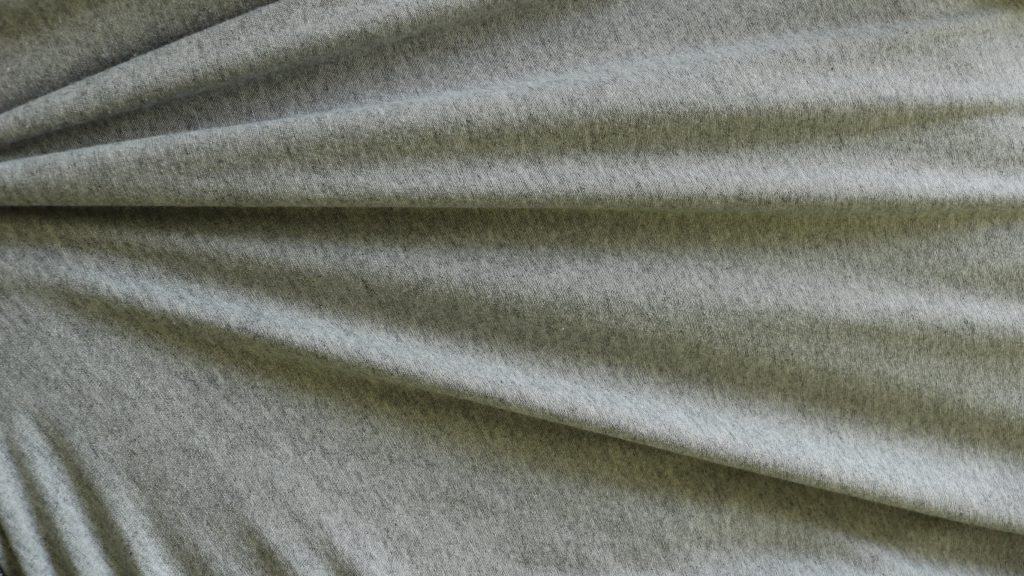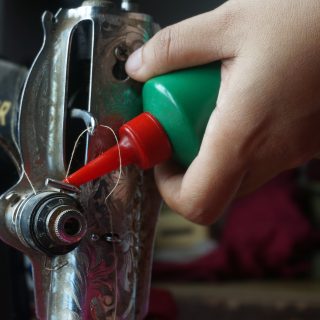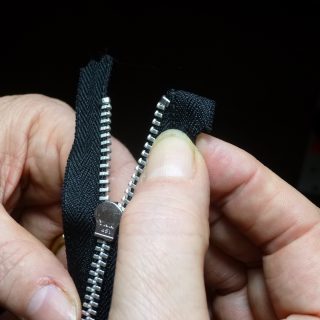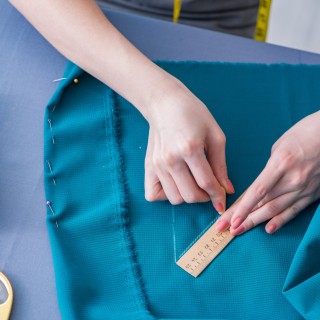There are only a few things that might scare a brave sewer.
Friends and family bugging you to sew dresses for them isn’t all that scary by itself, but when they are not willing to pay for your labor (and you know that they mostly are not), it might quickly turn into a nightmare and cause a couple of sleepless nights.
However, that is nowhere near the scariness of stretchy fabric that awaits for you to sew it. Fear not, my friends, as I’m here with some tips to help you sew stretchy fabric without the nightmares.
Useful Tips for Cutting Stretchy Fabric
#1 Wash the Stretchy Fabric Before Getting Into Cutting
You can take this advice for any kind of fabric unless you are using two or more different types of fabric on a project – like sewing a blanket. Consider it an act of putting rebellious elements in their place. If you wash and dry the fabric before cutting, it’ll hold itself together with more composure.
#2 Use Soap Slivers While Marking the Cutting Line
The main problem with what we call stretchy fabric (or knit fabric) is that it… stretches. It stretches all the time, whether you are trying to mark it, cut it, sew it, iron it, or carry it. Therefore, when doing anything with this type of fabric, you should keep that in mind.
If you try to use traditional markers such as pen, pencil, or even fabric markers there is a good chance that you’ll end up ruining the line and possibly the fabric itself in the end. Using a whole soap might be better than those, but still the sheer squarage of the pressure applied by a whole soap bar might be too much for your fabric. Just a sliver of soap, on the other hand, will not create too much pressure and it’ll gently leave enough of a mark that you can cut through.
#3 Use a Rotary Cutter and a Cutting Mat
Even if we all know that the rotary cutters are ideal for cutting any kind of fabric, we still go on and use scissors for that because that’s the most convenient. However, while using scissors to cut fabric, you are inevitably holding onto the fabric with one hand and thus stretching it. One thing about stretchy fabric is, though, you should never let it know that it can stretch and you should never give it the opportunity to do so. That’s why it’s better to use a rotary cutter and a cutting mat on stretchy fabric. It’ll minimize your contact with it and prevent unsolicited stretching.
#4 Don’t Use Pins for Holding It Together
Stretchy fabric is not only shamelessly stretchy but also extremely sensitive. A wrong pull, a wrong touch, a wrong penetration of a needle, or a careless pulling off of a sewing pin might damage it and ruin your sewing project. If you don’t want to be haunted by a hell-raising pin-head in the aftermath of a failed attempt, don’t use pins to affix loose pieces of stretchy fabric. Instead, opt for basting or using clips for that particular job.
Useful Tips for Sewing Stretchy Fabric
#1 Be Careful Not to Stretch the Fabric While Stitching
Whether you are working with a sewing machine or you are stitching by hand, I know you like to do it, right, I know you like to hold onto a part of the fabric and pull it towards yourself or away from yourself in sudden movements – you like it because it’s a sign that you are in the moment, that you are fully immersed in the therapeutic activity of sewing.
Yet, that’s exactly what stretchy fabric wants you to do, a bit of encouragement with the wrong kind of a pull, and voila, here it comes, the horrific stretch and the devastation of a brilliant garment as if it’s 1929. Just hold it gently and let it move with its own weight under the pressure foot or through your fingers.
#2 Use the Right Needle
Jersey is one of the most used stretchy fabric types, and thankfully, there is a special needle for sewing jersey. I recommend you use that kind of ball point needle when working on knit types of stretchy fabric. They are specifically made for use on those, but you can use them on other kinds of stretchy fabric as well, as they don’t break them, and even if they cause some damage, that damage is mostly just minimal.
For fabric that has the potential to stretch for eternity such as spandex and lycra, though, I recommend you use stretch needles. The high positioning of the eye of the needle on these products will result in stitches that will also stretch with the stretchy fabric, preventing it from possible damages.
#3 Use the Right Presser Foot
This one’s obviously for only those who employ their sewing machines for stitching stretchy fabric, and I am pretty sure that they know the feed dogs of the machine mostly do an efficient job for feeding the fabric to the machine, but still, as I said above, we like pulling the fabric – it’s a habit difficult to get rid off. Add to that a presser foot that applies too much pressure on the delicate fabric, and you’ll want to leave your home and spend the rest of your life in the Hill House. Therefore, using the right presser foot is imperative for projects that include stretchy fabric, and the right presser foot would be either a walking foot or a knit foot.
#4 Use the Appropriate Stitching Setting
Some sewing machine producers are aware of the horrible scenarios you might unwittingly find yourself in when working on stretchy fabric and they engineered a setting for stretch stitching. Needless to say, this setting is ideal for stretchy projects and will prevent your projects from stretching further in terms of time consumption.
However, you might not be lucky enough to possess one of those, or you might be preferring to stick with your old machine. In that case, you should use long or narrow zig zag stitches, which will let the stitches stretch with the fabric. If your machine has an overlocked stitching option, it’s all the better because it’ll create the effect you’d get from a serger.
#5 Use a Twin Needle for Hemming Stretchy Fabric
You can also get twin needles, which are designed specifically for the purpose of hemming stretchy fabric such as spandex, lycra, and suede, because doing a genuine double-folded hem on them is not recommended. A double-folded hem on stretchy fabric will quickly turn into a bulk and spoil the cut of the garment in question. A double stitch made by a twin needle, on the other hand, will be as perfect as it gets in appearance and prevent the hem from unfolding or from unwarranted rolls.
Final Words
I know that working with such a demanding piece of fabric might be infuriating. I don’t even know how many times I took a break from a project that included one on the verge of tears because I always ended up making a stupid mistake and the project was unnecessarily prolonged. However, if you take all the recommendations made above into your hearts and apply them successfully while working with a stretchy fabric, I can assure you that it won’t cause you any further issues or haunt you when there are already so many things to be haunted by in the world.
Last update on 2025-04-18 / Affiliate links / Images from Amazon Product Advertising API






